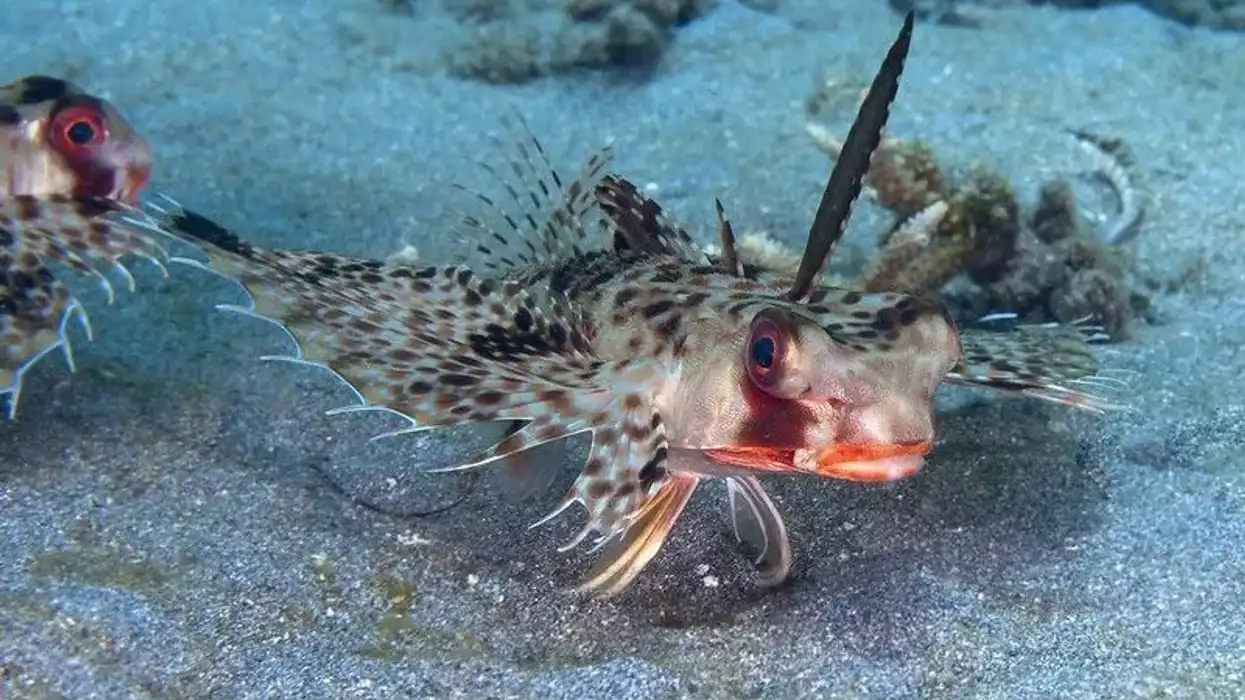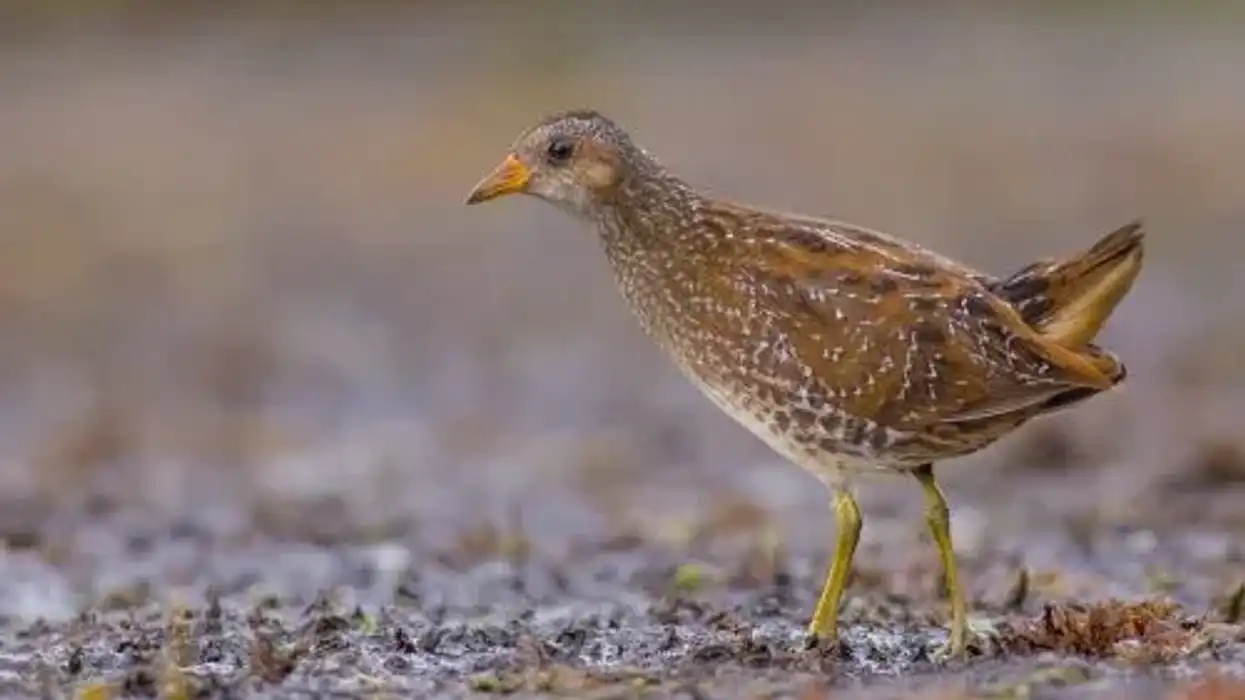Three Spot Gourami, commonly known as blue gourami, opaline gourami, golden or gold gourami, and also have the scientific name of Trichopodus trichopterus. The native range of this fish is in Southeast Asia.
The habitat of these species includes slow-moving freshwaters like swamps, marshes, and lowland wetlands.
The gourami, Trichopodus trichopterus, is a hardy fish and has an elongated body with a small mouth and there are different colors of this fish like opaline, lavender, blue, golden, and whitish. Thus, this fish is known for its bright colors.
The diet of this fish includes zooplanktons, crustaceans, and insect larvae.
When the male is ready for breeding, it builds a bubble nest and swims around the female to entice the fish. But after spawning, the female needs to be taken out of the tank or aquarium as the male can become aggressive towards the female, and thus, the eggs are taken care of by the male.
The temperature of the tank or the aquarium should be kept controlled and appropriate for the fish.
This fish does not get along with some other fishes so, it should be well known and researched about what fish to keep together with these gouramis as some species might have a peaceful temperament and aggressive fish should be paired with peaceful and calm ones. Make sure to set some aquatic plants in the aquarium too.
The diet and food are easy to manage of this fish.
They use the labyrinth organ to take in oxygen from the air. This fish is quite interesting to know about and if you are interested, read about bonito fish and monkfish species profile too.
Three Spot Gourami Interesting Facts
What type of animal is a three spot gourami?
Three Spot Gouramis are fishes.
What class of animal does a three spot gourami belong to?
It belongs to the class of Actinopterygii of fish.
How many three spot gouramis are there in the world?
There has been no specific number of these fishes recorded in the world.
Where does a three spot gourami live?
The native and natural location of this fish is slow-moving freshwater habitats in Southeast Asia.
What is a three spot gourami's habitat?
These fishes are found in slow-moving freshwater habitats, it is this fish's natural habitat. These fishes can be found in marshes, swamps, canals, and lowland wetlands. During the flood season, these fishes migrate to flooded areas such as seasonally flooded forests from permanent water bodies, and during the dry season, they travel back to these permanent water bodies.
Who do three spot gouramis live with?
These fishes cannot live in large groups as males tend to be aggressive but can live in pairs.
How long does a three spot gourami live?
This fish species is known to live for four to six years.
How do they reproduce?
Males build a bubble nest when ready to breed and then entice or attract females by swimming back and forth, raising its tail, and flaring their fins. The female lays up to 800 eggs and after spawning the females are removed from that tank as the males can be aggressive towards them.
The eggs and fry are taken care of by the male. The fry become free swimming in four to five days.
What is their conservation status?
The conservation status of these fishes is Least Concern.
Three Spot Gourami Fun Facts
What do three spot gouramis look like?
These fishes have an elongated body that is moderately compressed laterally. The mouth is small and dorsally directed.
It has a protractile and a vertical upper jaw and a prominent lower jaw. The scales are medium or moderate in size and are irregularly arranged, with a curved irregular lateral line.
There are around 40-52 scales in lateral series. There are six to eight spines in the dorsal fin and 7-10 soft rays. The anal fin is long and extends from the ventral fin to the tail and it has 9-12 spines and 30-38 soft rays.
Healthy fish have two visible and vivid dark spots on each side of their bodies. Selectively bred varieties can be found in opaline or marble patterned, platinum (silverish-whitish), blue, golden, and lavender.
How cute are they?
These fishes are considered to be cute because of their colors.
How do they communicate?
Not much information is available about the communication of these fishes.
How big is a three spot gourami?
These fishes are medium-sized and can be 5.9 in (150 mm) long.
How fast can a three spot gourami swim?
The exact speed of these fishes is unknown but they are known to be good swimmers.
How much does a three spot gourami weigh?
The weight of these fishes is unknown.
What are their male and female names of the species?
There are no specific names for the males and females of this fish. They can simply be referred to as the male three spot gourami and female three spot gourami.
To differentiate the male from the female in this species, look out for the dorsal fin. The dorsal fin in the males is long and pointed and the anal fin is pointed too. Females' fins are shorter and rounded. Some female fins can be as long as males.
What would you call a baby three spot gourami?
There is no particular name for a baby of this gourami. The babies are just referred to as fry.
What do they eat?
The diet of these fishes is both algae and meaty food-based. The food of this fish are zooplankton, crustaceans, and insect larvae like brine shrimp. This fish's diet can sometimes also include live insects like mosquitoes larvae and daphnia.
Are they dangerous?
These fishes are not dangerous to humans but the male of this species is considered as aggressive towards other males.
Would they make a good pet?
This species of the gourami make great pets as they are hardy and thus, are great in aquariums and it is not difficult to manage and take care of them. The aquarium size and temperature should be taken care of. The temperature should be appropriate for various gouramis and other tank mates.
Did you know...
Researches have found over 133 different species of gourami.
Dwarf Gourami is highly popular pets because of their bright colors, these are just three to four inches long and is friendly and placid.
Giant Gourami is kept in larger tanks and is known to eat other fishes and in some places, these fishes are used by people to control invasive populations of aquatic plants.
The three-spot fish or the opaline gourami as it commonly called is the most popular as pets and are also known for their bubble nest. Some of the common names of this species are Opaline Gourami, Blue Gourami, and Golden Gourami, or gold gourami.
Its name comes from the two spots on its body. While there is no third spot, the third spot is referred to as the dark pupil of the eye.
This species is known to change color when under high stress or when they are not kept in good conditions. The black spots tend to fade in such conditions.
This species is considered to be of minor commercial importance as a food fish in its native or natural habitat or range and is also farmed and is popular in the aquarium trade.
This fish is an extremely hardy fish. As some of the gourami fishes are aggressive and territorial, they can sometimes lead to the death of other fishes.
An interesting characteristic of this fish is that they are well known for eating hydra. Hydra is a tiny pest with tentacles containing venom.
Air stones can provide well-oxygenated water for the tank of this fish. This fish takes oxygen from the air with the use of their labyrinth organ. This labyrinth organ is an extension of the gill plates.
How many gouramis should be kept together?
It is better to keep pairs of these fishes in one tank as males tend to be aggressive and fight with others. Two females can be paired but it is advisable to not keep males together. Fishes of similar size and temperament can be kept together. A mix of neutral personalities can make ideal tank mates.
What kind of fish can live with gouramis?
Fin nippers and gouramis should never be kept together.
Some ideal or good tank mates include robust cyprinid species like barbs, larger characins, loricariid catfish, and loaches. These can be kept with other gouramis of similar size and temperament.
Other fishes that can go well with gouramis and make good tank mates are angelfish as they are peaceful and guppies can also be housed with less aggressive gouramis.
Here at Kidadl, we have carefully created lots of interesting family-friendly animal facts for everyone to discover! Learn more about some other fishes including tetra or guppy.
You can even occupy yourself at home by drawing one on our three spot gourami fish coloring pages.









